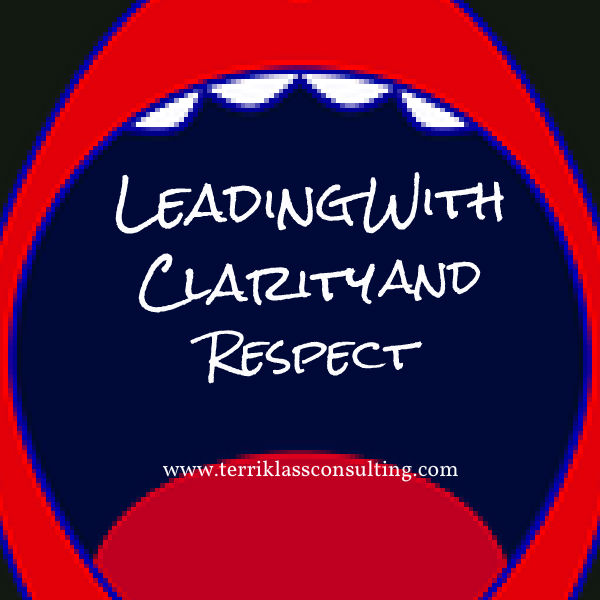One of the most important skills for leaders to own is their ability to communicate effectively. Although we each may have unique styles of conveying our messages, each message represents who we are and how we are perceived. I usually begin my Assertive Communication workshops by asking each person to share what they usually get tripped up on when they speak or write. It is always interesting to hear the various responses:
“I feel that I can’t always find the right words to use.”
“I tend to be soft-spoken and sometimes people don’t take me seriously.”
“My emails are not professional enough and I get called out on it.”
“I tend to use too many details and then others can’t follow what I am saying.”
I am sure you can add your particular challenges with communication and maybe you can relate to some of these replies. We all face situations where we have a difficult time saying what we want to say or even finding our voices. Yet, when we think of strong leaders, we think of strong communicators. One cannot lead themselves or others without communication chops.
[Tweet “Strong leaders are strong communicators.”]
All aboard for strong communication strategies:
CHOOSE AUTHENTIC VOCABULARY
Often when we can’t find the right words to use, it is because we aren’t being honest with our own choices. Use language that feels comfortable while still being professional. When we try to communicate with another’s voice, we will not be successful. Of course, we can change our style at any time to fit who we want to project.
REMAIN FLEXIBLE TO DIFFERENT VIEWS
Our suggestions aren’t the only way to go, so being open- minded can really elevate our leadership voice.
- Ask for input from all the essential stakeholders
- Incorporate the different perspectives in communicating your ideas
- Be approachable and willing to compromise
- Avoid judgmental or negative word choices
- Swap “but” for “and”
KNOW YOUR OWN BODY LANGUAGE AND RESPECT DISTANCE
Think about what you are doing with your hands and body when communicating. Does your body language support or detract from your message? Are you able to maintain a healthy distance between others in a face-to-face conversation? Remember we each have a comfort level of how close we need to stand. What is comfortable for one person may not be comfortable for another. So if you find yourself waltzing across a room when speaking with someone, step back and realize you have invaded their comfort zone.
BE AWARE OF THE EMOTIONS ON YOUR FACE
Our faces give away our true message so keep them consistent with the words. Good eye contact is critical as it shows we are focused in the communication. Smile when appropriate. Laugh when something is funny. Let your face enhance your communication.
LISTEN TO GRASP
How many times have you heard the words, but couldn’t read the message? Leaders use strategic listening to respond purposefully in an interaction.
- Ask empowering and open-ended questions
- Restate what is being shared
- Nod and lean in slightly
- Summarize to show true understanding
BE CLEAR WHILE STILL RESPECTFUL
Leaders need to be assertive communicators which means they need to state their needs and wants in a clear way, while still being respectful of the other person’s point of view. Clearly share your message with descriptive word choice, while validating the opinions of others.
[Tweet “When leaders are assertive communicators they respect other views.”]
PRACTICE SHARING YOUR IDEAS AND VOICE
As with most skills, practice being a strong communicator. Get feedback from those you trust and try to incorporate some of those honest suggestions into future communications. The best way to become that great communicator is by growing your skills.
What communication strategies have helped your leadership?
(Photo- Pixabay)



Terri, This is an excellent lst. Being deliberate in how, when and why we communicate is so vital as leaders. I also think frequency is important.It’s helpful to have a regular cadence to your messaging, and when something is really important, communicate it 5 times, 5 different ways.
Terrific addition Karin! Repetition can be so important as it helps the listener digest the speaker’s message more completely.
Being a strong communicator does mean communicating in a expected tone and voice. When people we work with hear our messages with specific volume, speed and inflection, they are more likely to take hold of our words.
Thanks Karin!
You write such great articles on communication! And this is another one…your points about body language are important because most people are not aware of the conflicting messages between their verbal and non-verbal signals. People pay way more attention to how you say something than they do the actual content of the communication. You bring up important reminders….
Thanks LaRae for your kind words!
Body language greatly impacts our messages and being aware of how we present ourselves in critical. Staying with a conversation by asking relevant questions and providing good eye contact shows others how important they are to us. We need to give others our full attention.
Thanks LaRae!
Terri – I love that you start your workshops with questions that get people to examine their behavior and share their struggle. It helps each one of them prepare for change and reminds them that they are not alone in their desire to improve.